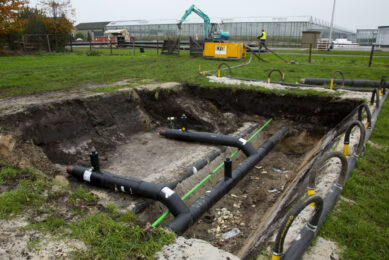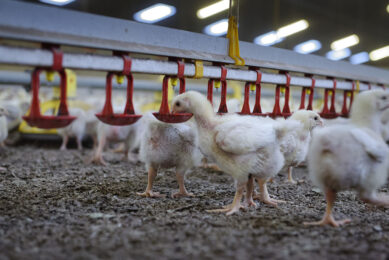Study on soil and water quality associated with free-range egg production

Concerns about water quality in the UK and, in particular, pollution issues in the catchment areas of the rivers Wye and Usk on the England/Wales border have escalated in recent years.
Despite the protected status of the rivers, there have been reports of algal blooms, eutrophication and ecological decline – indicative of an over-abundance of nutrients such as nitrogen and phosphorus.
With the recent surge in numbers of poultry farms in the region, the sector has been implicated as a possible contributor. It prompted the British Egg Industry Council to commission ADAS to assess nutrient levels in soils from land that is used for free-range egg production and in watercourses that collect water draining from this land.
Working with egg packers, the BEIC identified “high risk” free-range egg production farms in the Wye and Usk catchment areas. The risk assessment was based on the location, topography and history of the operation with ADAS carrying out 17 sampling visits to 14 different farms.
Soil sampling
Soil sampling on the range followed conventional sampling protocols with samples collected in a W shape pattern. A minimum of 8 soil samples were collected (approximate depth 7.5cm) on each occasion and these were aggregated into a single composite sample for testing. A control soil sample was also collected from a nearby area of grassland, that was, as far as possible, not grazed by livestock or manure/fertiliser applications. In total, 17 range and 17 control samples were taken.
Water sampling
Suitable locations for water sampling were identified by ADAS, including upstream and downstream samples from a watercourse as close as possible to the point(s) of entry of water from the range land. The timing of the water sample collection was particularly important, as water had to be flowing through ditches and streams adjoining the farm. Periods of drought needed to be avoided as did times when poultry housing orders meant the birds were inside. For these reasons, the sampling period was extended and covered nearly 2 years – July 2021 to June 2023. In total, water data was available from 11 upstream and 11 downstream samples.
Testing
Soil and water samples collected by ADAS were analysed by NRM Laboratories. For soil, a standard suite of analyses were undertaken, comprising pH, phosphorus, potassium and magnesium. For water, analyses were for total phosphorus, dissolved phosphorus, total potassium, nitrate nitrogen and ammonium nitrogen. Biochemical oxygen demand (BOD) and faecal indicator organisms (FIO) were also assessed to provide a guide to organic pollution.
The purpose of the soil analysis was to allow comparison between range and control land to determine nutrients levels which might be associated with the use of the land by free-range laying hens. Water sampling and analysis was intended to show any changes between upstream and downstream samples, which might be attributable to run-off from the range.
Variation in relative levels of dissolved and total P, nitrate and ammonium N and BOD may also provide a possible indication of the source of the P. High total P and low soluble P, high nitrate and low ammonium N and low BOD suggests P may be associated with soil input to the water course. High soluble P, ammonium N and BOD implies that the P may be more likely to originate from organic manures, particularly if associated with high or increased levels of coliform bacteria.
Soil and water results from the study
The results showed slightly increased P and K in soils on range areas, compared to control. But “managed agricultural soils” of any kind, including range areas, are generally likely to have higher indices than unmanaged agricultural soil which represented the control samples.
The increase in nutrient levels on the range land is relatively modest and are within the range that might be expected of managed agricultural soils across England and Wales.
The water sample results were more difficult to interpret and some anomalies were found. Based on all the evidence, the mean total phosphorus (P) level in water was lower downstream than upstream but the findings were heavily influenced by one sample result. Taking out this sample meant there was little difference in total P in the mean upstream and downstream samples or any indication of any noticeable increase in total P in water downstream, compared to upstream.
In total, the results show that the range land of the majority of the units studied does not appear to have any significant direct impact on the quality of the watercourse sampled. Mean nitrate levels from downstream samples were higher than upstream samples and although the range of nitrate levels was considerable (from 0.1mg/l to 4.4mg/litre), levels were low in comparison with Water Framework Directive limits.
Average BOD was lower in the samples collected downstream of the units but levels and the change in BOD were comparatively low in most of the water samples. It was not possible to draw any conclusions on the possible origin of P in individual site results from consideration of the relative levels of nitrate N, ammonium N, coliform bacteria and the ratio of soluble: total P.
The report can be found here: BEIC commissioned report into soil and water samples within the Rivers Wye & Usk catchment areas












